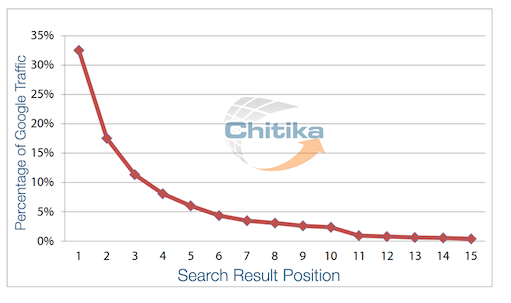In 1994 two Standford University students, Jerry Yang and David Filo, created a website to organize all their favorite web pages. It was called “Jerry and David’s Guide to the World Wide Web”. At this time the web was almost organizable with only 22,000 pages.Later they would rename the site “Yahoo!” (45).
A lot has changed since then. Today there are now trillions of webpages making human organization long obsolete. So how are search engines organized now?
In a nutshell search engines crawl all the websites they can find using software called spiders. These spiders click on all the links on each page finding all the content.

Once it knows all the content it saves a summary of the site in the archive or index.When a user submits a search the engine retrieves the appropriate pages with those keyword(s). The results are not from the whole web just the pages that search engine has archived. The results page starts with the highest quality pages that it thinks you will like the best. It tries to base this on the popularity and relevance of the pages. This is decided by many things.
1. The page is linked to lots of other web pages (Think of links as votes.)
2. Your keywords are present and how many times they are repeated (in the title, content, URL etc)
3. People spend a significant amount of time on the page
4. The linking structure of the page is good making it easy to navigate
These are just a few. Search engines use complex algorithms to figure all this out and give the pages scores. Those with the highest score appear at the top of the results page. Of course once people started to figure out how search engines worked they wanted to use that knowledge to make their page appear highest on the list. Thus Search Engine Optimization (SEO) and Search Engine Marketing (SEM) were born.
Typically SEO is unpaid and SEM is paid although there is overlap between the two.
Business can leverage SEO and SEM to make their web page more visible to customers. The higher the page rank of your site, the higher in the results it will be, leading to more people entering your page. This could translate into greater awareness and greater sales. This is especially important for Inbound Marketing. Customers will have a hard time finding your website or blog if it isn’t appearing in their search results. People typically only spend time at the top half,of the first page of Google as proven in this study done by Chitika.

This graphic should be terrifying. It more or less says if you’re not at the top you’re at the bottom. There is not much in between.

This is why SEO is so important. If your going to get traffic to your website you have to be showing up in the top of your customer’s search results.
There are tons of ways you can boost your pages page rank. Here are a few simple yet powerful ones
1. The content of your web page matters a lot. Make sure it is interesting and something people want. The better it is the longer people will stay on your page and the more likely they are to link to your page or share it via social media. Each of these things can boost your rank.

2. Links matter a lot and they are not all created equal. Spiders use links as road maps to navigate the internet. You want high quality, trusted pages to link to yours and vise-versa. This puts your page in a “good part of the neighborhood”. Search engines will put higher weight on these links. Fresh links are also higher weight so you want people to be creating new links to your page. Social media links are given less weight but are still important. These could grow in weight in the future.
3. Make sure key words are used on your page in the right places.
- In the title as close to the beginning as possible
- In the URL
- Near the top of the page
- Throughout the content
- In the meta description tag
Also make sure you are using the right keywords. Your term for something may not be the same as your customer’s.
4. Spiders have a hard time picking the content out of Java, Flash, AJAX, videos and images. If you use these on your page make sure you have enough text context around them for the spiders to read and understand. Otherwise they may see nothing and think your page is blank. Needless to say this is not good for your ranking.

5. Spice up what your search result will look like with features like Google+, Google, Places and Google Merchant. Taking advantage of these features will enrich what your results look like with maps, sales information and peer reviews.
Sources:
Campbell, Richard, Christopher Martin, and Bettina Fabos. Media and Culture: An Introduction to Mass Communication. 9th. Boston/New York: Bedford/St. Matin’s , 2013. 45. Print.